Tags
Bacchus, bc wine, Cabernet Franc, Chardonnay, Cowichan Valley, Gamay, Gewurztraminer, Lillooet, Marechal Foch, Ortega, Pinot Gris, Pinot Noir, Riesling, rosé wine, Siegerebbe, sparkling wine, Vancouver Island, wine tour, Wine Tourism, wineries
While the Okanagan certainly represents the lion’s share of BC wineries and vineyards, it is not the only region producing BC wine. In the past month I visited two other regions: the Cowichan Valley on Vancouver Island, and one of the emerging regions, Lytton-Lillooet.
According to the 2014 BC Grape Acreage Survey, Vancouver Island is home to 50 vineyards, making up just under 400 acres, or 3.8% of the total planted throughout the province. And according to the Liquor Control & Licensing Branch (LCLB), as of August this year there were 32 licensed wineries on Vancouver Island. Over the last few years I have visited a handful of them but unfortunately I don’t get down to the Island more often than once every 12-18 months.
On a recent trip with friends to Vancouver Island we were focussing a lot on food, wine, beer & cider: visiting many restaurants, brew pubs, a couple of wineries, and one cidery (that happened to be playing host to over 20 cideries for a special event). Although we were based down in Victoria, it was an easy day trip to visit some wineries in and around Duncan (only 60 km north). We decided to start with Averill Creek (established in 2001) as we had sampled some of their wines before but had never visited the winery. It’s a lovely west-coast modern building in a picture-perfect hillside setting on the southeastern slopes of Mount Prevost (overlooking Satellite Channel, with Salt Spring Island beyond. I could see how the patio would be a very popular picnic spot in the summer months.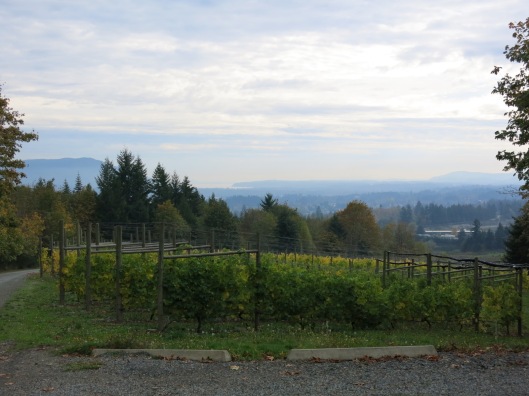
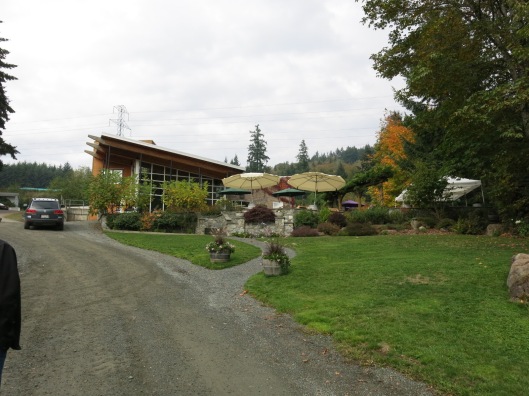
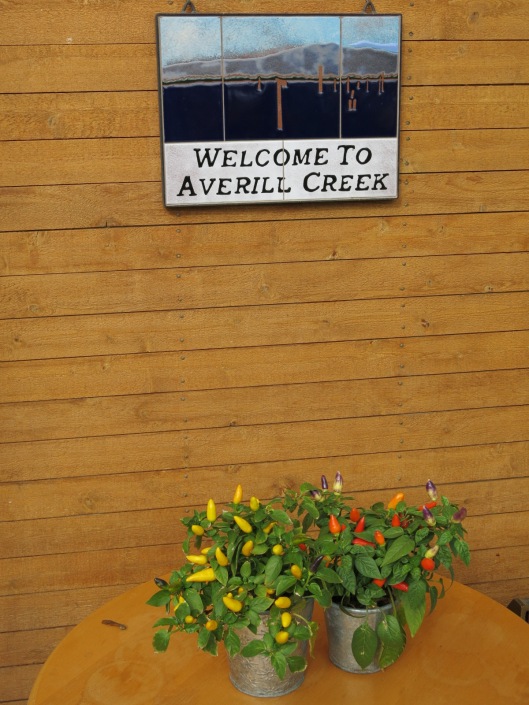
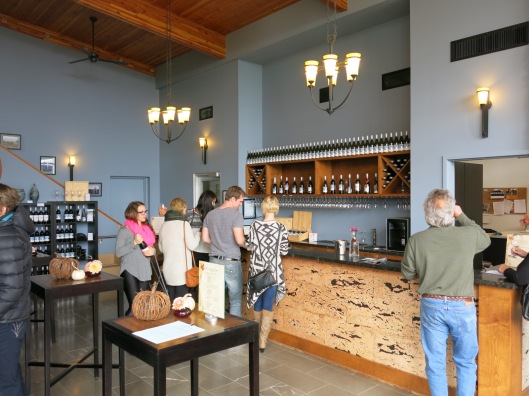 We were greeted in the tasting room and led through some wines. We began with the 2014 Gewürztraminer, with grapefruit and lychee on the nose. It is dry with medium-plus acidity and medium-minus body. It has flavours of grapefruit and lychee with some tropical notes.
We were greeted in the tasting room and led through some wines. We began with the 2014 Gewürztraminer, with grapefruit and lychee on the nose. It is dry with medium-plus acidity and medium-minus body. It has flavours of grapefruit and lychee with some tropical notes.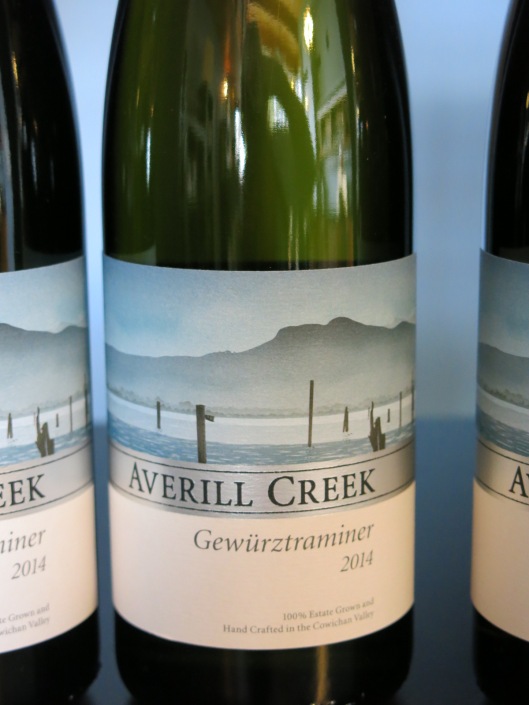 Next was a particularly interesting wine – the 2014 Foch-Eh! This is a light, fruity, easy-drinking, unoaked style of Marechal Foch that was fermented using a technique called carbonic maceration. It is a vibrant fuchsia in colour with aromas of juicy red currants and strawberry. It is dry with medium-plus acidity medium-minus body and flavours of red berries and pomegranate. For those who aren’t huge fans of Foch, I would recommend trying this wine and serving it slightly chilled on a warm summer’s day.
Next was a particularly interesting wine – the 2014 Foch-Eh! This is a light, fruity, easy-drinking, unoaked style of Marechal Foch that was fermented using a technique called carbonic maceration. It is a vibrant fuchsia in colour with aromas of juicy red currants and strawberry. It is dry with medium-plus acidity medium-minus body and flavours of red berries and pomegranate. For those who aren’t huge fans of Foch, I would recommend trying this wine and serving it slightly chilled on a warm summer’s day.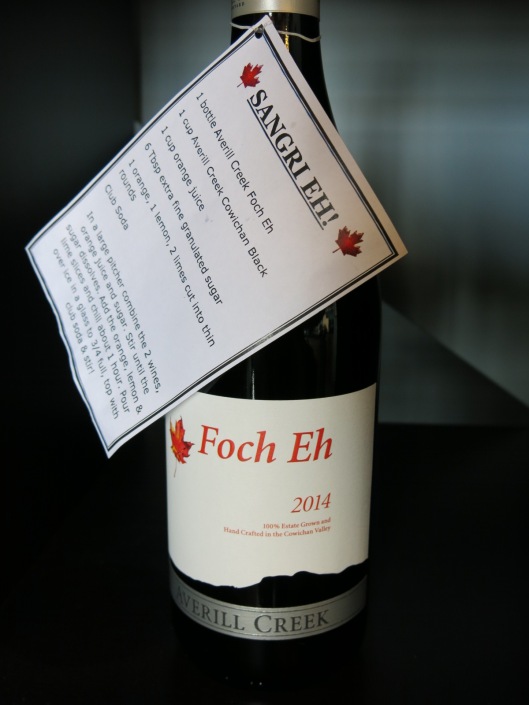 The 2011 Pinot Noir (2010 pictured below) is medium ruby in colour, with a hint of purple. It has a perfumed nose of raspberry and ripe plum. It is dry with medium-plus acidity, medium body and medium-minus tannins, with flavours of damson plum, raspberry and bit of spice, with a medium-plus finish.
The 2011 Pinot Noir (2010 pictured below) is medium ruby in colour, with a hint of purple. It has a perfumed nose of raspberry and ripe plum. It is dry with medium-plus acidity, medium body and medium-minus tannins, with flavours of damson plum, raspberry and bit of spice, with a medium-plus finish. 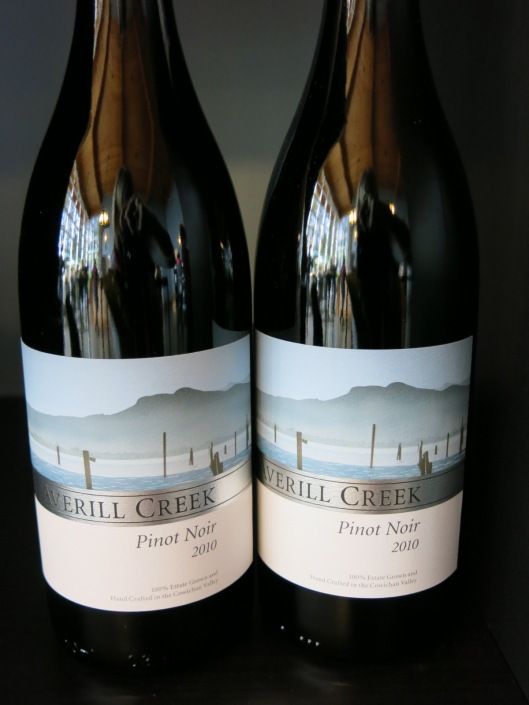 The 2012 Foch Cab is a blend of 60% Marechal Foch, 15% Cabernet Foch, 15% Cabernet Libre (both Blattner varietals) and 10% Merlot. It is medium garnet in colour with a smoky nose, with some dark fruit and savoury notes. It is dry with medium-plus acidity, medium-plus body and medium tannins. It has flavours of red berries, black currants and some gamey notes.
The 2012 Foch Cab is a blend of 60% Marechal Foch, 15% Cabernet Foch, 15% Cabernet Libre (both Blattner varietals) and 10% Merlot. It is medium garnet in colour with a smoky nose, with some dark fruit and savoury notes. It is dry with medium-plus acidity, medium-plus body and medium tannins. It has flavours of red berries, black currants and some gamey notes.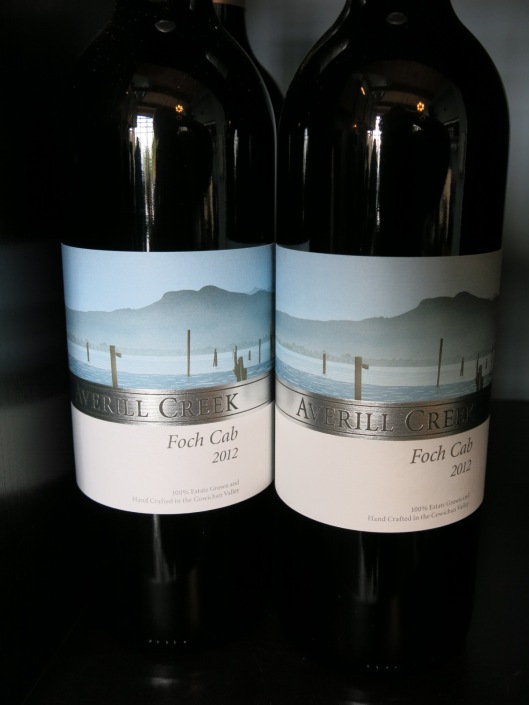 We finished our tasting with the 2008 Cowichan Tawny, a barrel-aged fortified blackberry dessert wine with aromas and flavours of dried fruits, nuts and spice.
We finished our tasting with the 2008 Cowichan Tawny, a barrel-aged fortified blackberry dessert wine with aromas and flavours of dried fruits, nuts and spice.
After stopping for a bit of sightseeing and a bite for lunch in Cowichan Bay, we headed to Blue Grouse Estate Winery & Vineyard, a 45 acre estate with 7 acres of vineyard planted to Pinot Gris, Pinot Noir, Muller Thurgau, Ortega, Black Muscat, Siegerrebe and Bacchus. 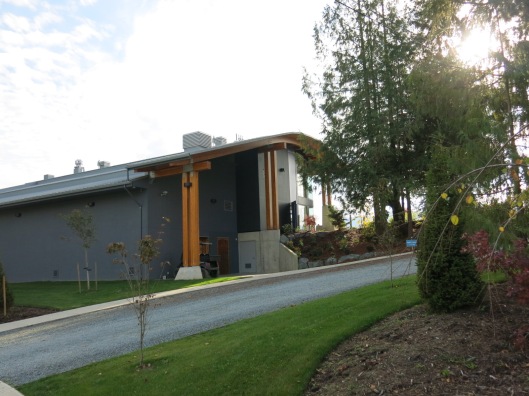 We were greeted by tasting room manager Derek and he began our tasting before owner Paul Brunner stepped in to explain the different lineups of wine offered at Blue Grouse. There is the Quill line of wines, which are made either entirely from grapes not grown on the estate (but still BC grapes), or blends of non-estate and estate grapes. Then there is the Estate line of wines, made from 100% estate-grown grapes. We began with the 2014 Quill Rosé, made from 100% Gamay Noir grapes, some from Blue Grouse and some from another vineyard 15km north. It is a crisp, refreshing, dry wine with aromas and flavours of strawberry and red currant. Definitely my kind of rosé! The 2013 Estate Ortega has a lovely aromatic nose, is dry with medium-plus acid and a light body. It has flavours of citrus, apple, almond & peach. The 2013 Quill Dry White is a blend of 36% Ortega, 39% Pinot Gris, 15% Gewürztraminer and 10% Müller-Thurgau. It has aromas of apple and peach, is dry with medium-plus acidity, medium body and flavours of lychee, apple and citrus. Very pleasant, easy-drinking.
We were greeted by tasting room manager Derek and he began our tasting before owner Paul Brunner stepped in to explain the different lineups of wine offered at Blue Grouse. There is the Quill line of wines, which are made either entirely from grapes not grown on the estate (but still BC grapes), or blends of non-estate and estate grapes. Then there is the Estate line of wines, made from 100% estate-grown grapes. We began with the 2014 Quill Rosé, made from 100% Gamay Noir grapes, some from Blue Grouse and some from another vineyard 15km north. It is a crisp, refreshing, dry wine with aromas and flavours of strawberry and red currant. Definitely my kind of rosé! The 2013 Estate Ortega has a lovely aromatic nose, is dry with medium-plus acid and a light body. It has flavours of citrus, apple, almond & peach. The 2013 Quill Dry White is a blend of 36% Ortega, 39% Pinot Gris, 15% Gewürztraminer and 10% Müller-Thurgau. It has aromas of apple and peach, is dry with medium-plus acidity, medium body and flavours of lychee, apple and citrus. Very pleasant, easy-drinking.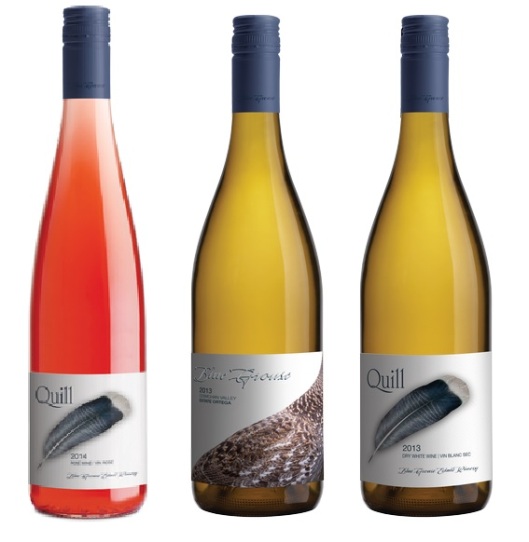 The 2014 Estate Bacchus was a surprise. I’ve typically enjoyed Bacchus wines in the past, but they’ve been typically done in an off-dry style, pretty, but easy, nothing overly complex or interesting about them. Not this Bacchus though! Winemaker Bailey Williamson has outdone himself on this one. It has a very pronounced nose with notes of elderflower and juniper. It is dry with high acidity, medium body and is highly aromatic. It has delicate floral notes, some savoury notes, flavours of orchard fruits and some unexpected complexity with a long finish. The 2014 Estate Siegerebbe has aromas of grapefruit, lychee and peach. It is dry with medium-plus acidity and medium-minus body. It is clean and fresh with flavours of citrus and white peach. The 2014 Quill Riesling (sourced from a vineyard near Tuc el Nuit Lake in Oliver) has a nose of peach, orchard fruit and light floral notes. It is dry with medium-plus acidity and medium-minus body. It has flavours of crisp green apple and lemon with a very long finish. The 2012 Paula is Bailey’s first release of a traditional method sparkling wine at Blue Grouse. It is a blend of Pinot Gris, Ortega, Müller-Thurgau, and a small percentage of Pinot Blanc. It has persistent fine bubbles and aromas of citrus and brioche. On the palate it has a fine mousse and flavours of green apple and citrus with toasty notes and a hint of sweet fruit. It is a lovely, very quaffable sparkling wine. We finished the tasting with the 2013 Quill Red, which is a blend of 44% Marechal Foch, 28% Cabernet Franc and 28% Merlot. The Foch was sourced from the Cowichan Valley, while the Cab Franc and Merlot were sourced from Oliver. It is a medium ruby in colour with aromas of ripe cherry and plum. It is dry with medium-plus acidity, medium body and medium-minus tannins. It has flavours of cherry, plum and red currant with a medium finish.
The 2014 Estate Bacchus was a surprise. I’ve typically enjoyed Bacchus wines in the past, but they’ve been typically done in an off-dry style, pretty, but easy, nothing overly complex or interesting about them. Not this Bacchus though! Winemaker Bailey Williamson has outdone himself on this one. It has a very pronounced nose with notes of elderflower and juniper. It is dry with high acidity, medium body and is highly aromatic. It has delicate floral notes, some savoury notes, flavours of orchard fruits and some unexpected complexity with a long finish. The 2014 Estate Siegerebbe has aromas of grapefruit, lychee and peach. It is dry with medium-plus acidity and medium-minus body. It is clean and fresh with flavours of citrus and white peach. The 2014 Quill Riesling (sourced from a vineyard near Tuc el Nuit Lake in Oliver) has a nose of peach, orchard fruit and light floral notes. It is dry with medium-plus acidity and medium-minus body. It has flavours of crisp green apple and lemon with a very long finish. The 2012 Paula is Bailey’s first release of a traditional method sparkling wine at Blue Grouse. It is a blend of Pinot Gris, Ortega, Müller-Thurgau, and a small percentage of Pinot Blanc. It has persistent fine bubbles and aromas of citrus and brioche. On the palate it has a fine mousse and flavours of green apple and citrus with toasty notes and a hint of sweet fruit. It is a lovely, very quaffable sparkling wine. We finished the tasting with the 2013 Quill Red, which is a blend of 44% Marechal Foch, 28% Cabernet Franc and 28% Merlot. The Foch was sourced from the Cowichan Valley, while the Cab Franc and Merlot were sourced from Oliver. It is a medium ruby in colour with aromas of ripe cherry and plum. It is dry with medium-plus acidity, medium body and medium-minus tannins. It has flavours of cherry, plum and red currant with a medium finish.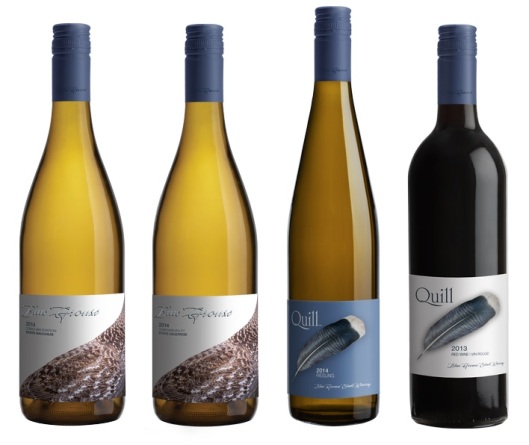
Following our tasting, Paul took us on an extensive tour of the new facilities. Although the new building only opened earlier this year, the property has had vines for close to 40 years, first as experimental plantings in 1977, then in earnest by previous owner Hanz Kiltz from the late 1980s. Blue Grouse Winery was established in the early 1990s. Paul and his family purchased the winery in 2012 and had the new state-of-the-art facility built on to the existing facility. The modern sustainable building relies on geothermal heating and cooling, which makes for one of the coolest mechanical rooms (I admit it, the architectural geek in me came out on this tour). The bright tasting room features double tasting bars and a fireplace lounge area.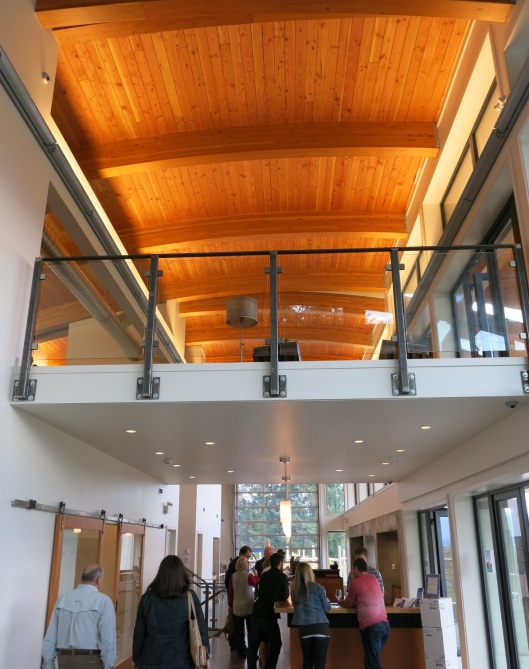
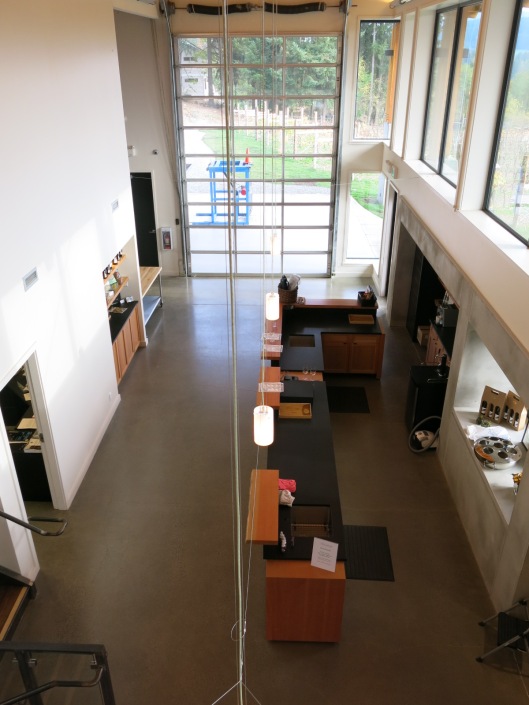 The upper level lounge which overlooks the tasting room, pays homage to Hanz Kiltz and the history of the property, while opening up views over the vineyards and the stunning surrounding landscape of rolling hills.
The upper level lounge which overlooks the tasting room, pays homage to Hanz Kiltz and the history of the property, while opening up views over the vineyards and the stunning surrounding landscape of rolling hills. 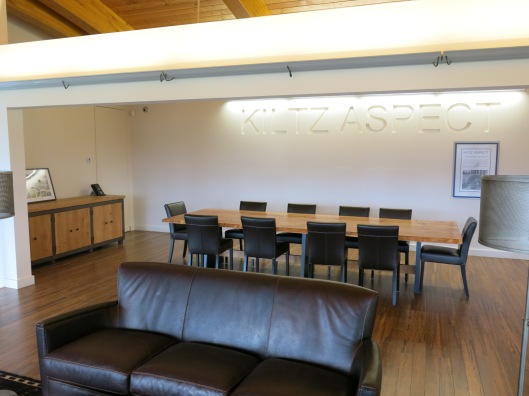
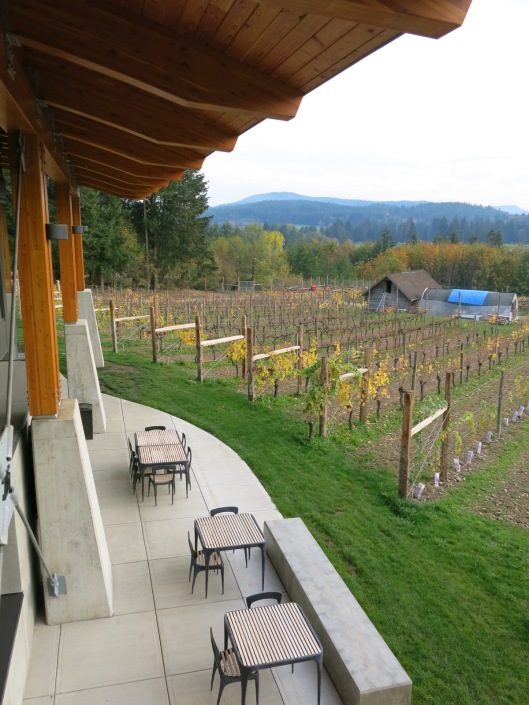
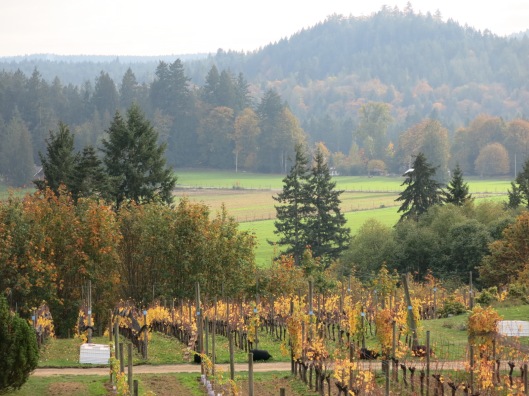
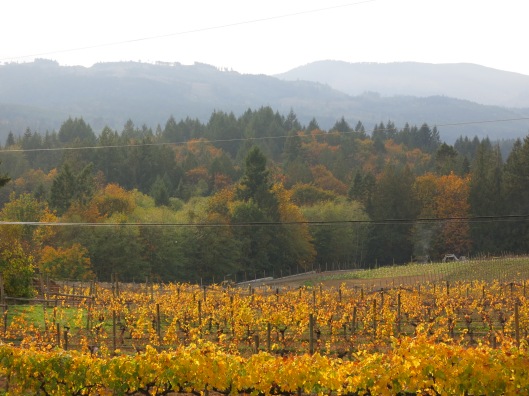
Following a quick trip earlier this month to attend the Cornucopia Wine Festival in Whistler, I stopped in at Fort Berens Winery in Lillooet on my way home. I hadn’t been out there since August of 2012, as part of my initial winery tour for this blog, and a lot has changed since then. Back in 2012, the tasting room was essentially in a barn and the only washroom was a porta-potty! Now there is a bright new tasting room and winemaking facility, which officially opened last year.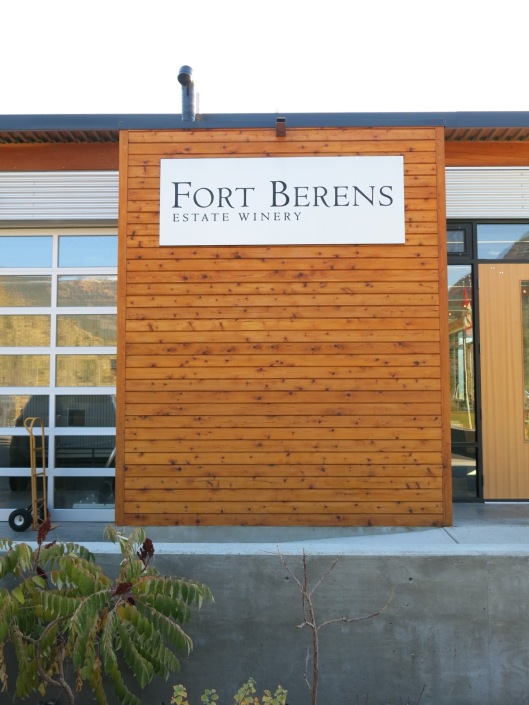
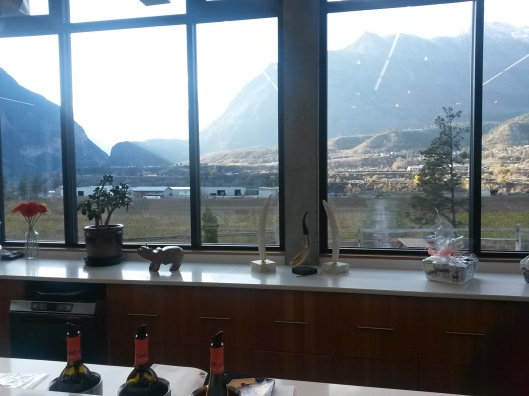
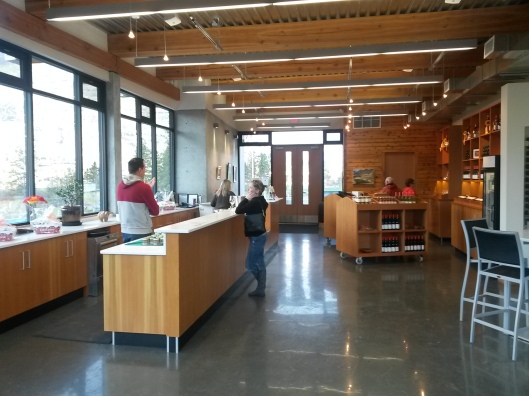
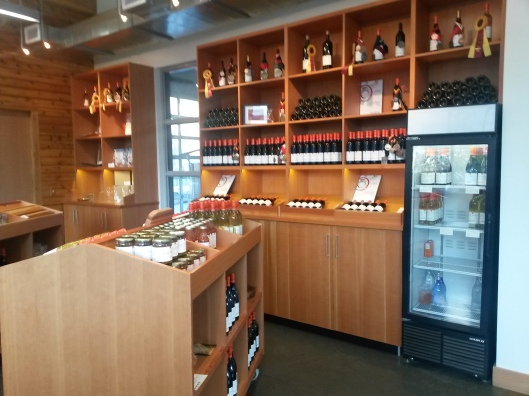 I tasted through the portfolio, starting with the 2014 Pinot Gris with pear and melon on the nose. It is dry with medium-plus acidity and medium body. It is fresh and fruit-forward with flavours of pear, melon and peach. The 2014 Unoaked Chardonnay has citrus and tropical notes, is dry with medium-plus acidity and medium body. It has flavours of apple, pear and lemon with a medium-plus finish. The 2014 Riesling has aromas of stone fruit and some floral notes. It is dry with a hint of sweetness, medium body and a round mouthfeel. It has flavours of apricot, peach and citrus.
I tasted through the portfolio, starting with the 2014 Pinot Gris with pear and melon on the nose. It is dry with medium-plus acidity and medium body. It is fresh and fruit-forward with flavours of pear, melon and peach. The 2014 Unoaked Chardonnay has citrus and tropical notes, is dry with medium-plus acidity and medium body. It has flavours of apple, pear and lemon with a medium-plus finish. The 2014 Riesling has aromas of stone fruit and some floral notes. It is dry with a hint of sweetness, medium body and a round mouthfeel. It has flavours of apricot, peach and citrus.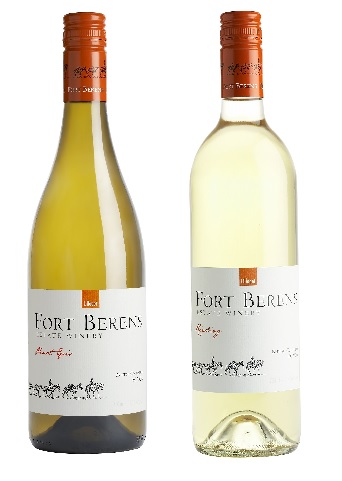 The 2013 Pinot Noir has a rich nose of cherry, raspberry, spice and a hint of earthiness. It is dry with medium-plus acidity, medium tannins, medium body and flavours of raspberry, cranberry, red cherry and a hint of spice. It is elegant, with some complexity and a long finish – quite lovely. The 2013 Cabernet Franc has aromas of smoke, raspberry and spice. It is dry with medium-acidity, medium-plus tannins, medium-plus body and flavours of cherry, raspberry and spice. It is nicely balanced with a long finish. The 2013 Meritage is a blend of 60%Merlot, 20% Cabernet Franc & 20% Cabernet Sauvignon. It has aromas of smoke, plum, cassis, cherry and some savoury notes. It is dry with medium-plus acidity, medium-plus silky tannins and medium body. It has flavours of cherry, spice, plum and cassis with a medium-plus finish. The 2013 Late Harvest Riesling has a ripe pear nose. It is off-dry with medium-minus acidity and medium body with flavours of pear nectar, lychee and ripe mango.
The 2013 Pinot Noir has a rich nose of cherry, raspberry, spice and a hint of earthiness. It is dry with medium-plus acidity, medium tannins, medium body and flavours of raspberry, cranberry, red cherry and a hint of spice. It is elegant, with some complexity and a long finish – quite lovely. The 2013 Cabernet Franc has aromas of smoke, raspberry and spice. It is dry with medium-acidity, medium-plus tannins, medium-plus body and flavours of cherry, raspberry and spice. It is nicely balanced with a long finish. The 2013 Meritage is a blend of 60%Merlot, 20% Cabernet Franc & 20% Cabernet Sauvignon. It has aromas of smoke, plum, cassis, cherry and some savoury notes. It is dry with medium-plus acidity, medium-plus silky tannins and medium body. It has flavours of cherry, spice, plum and cassis with a medium-plus finish. The 2013 Late Harvest Riesling has a ripe pear nose. It is off-dry with medium-minus acidity and medium body with flavours of pear nectar, lychee and ripe mango. 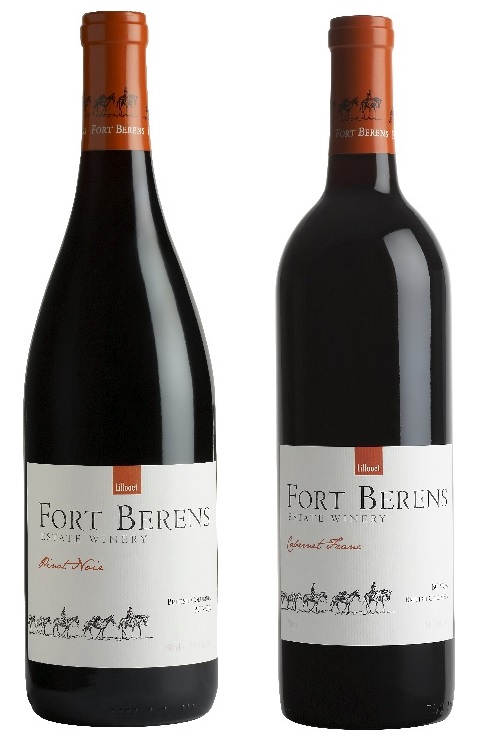
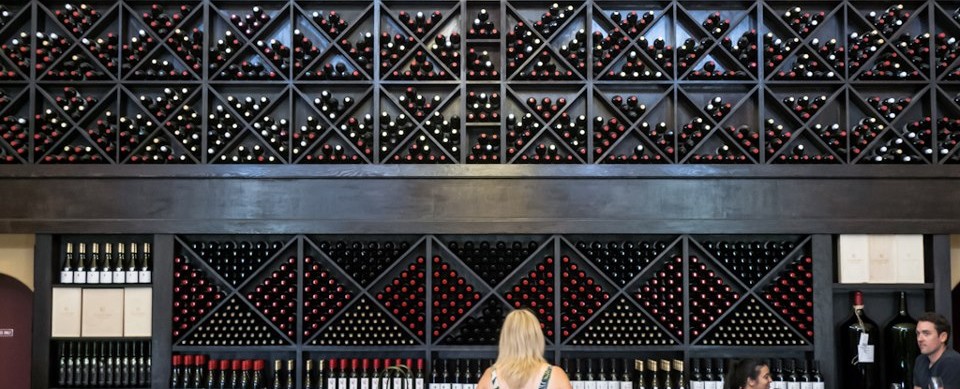
Awesome wineries right on my island. Who Knew? Sis and I have been going to the OKanagan every summer for wine tasting. She comes all the way from Cochrane AB and i fly from Victoria. Can’t wait to visit these wineries without leaving home. Hooray for VI !! Hope some of them are sold in our BCLD – thank you
The only wine from Vancouver Island that I currently have found in the BCLDB system is from Cherry Point. This is likely because it’s a reasonably expensive channel for wineries to sell through, and most of the wineries on the island are reasonably small. Try looking for the wines in BC VQA stores or private liquor stores (beer & wine stores).